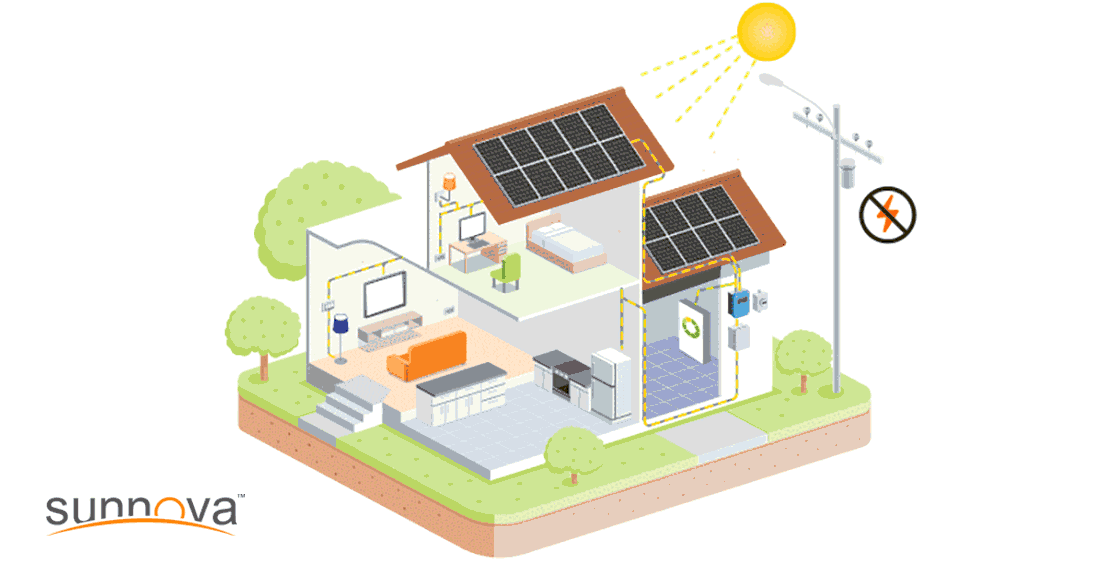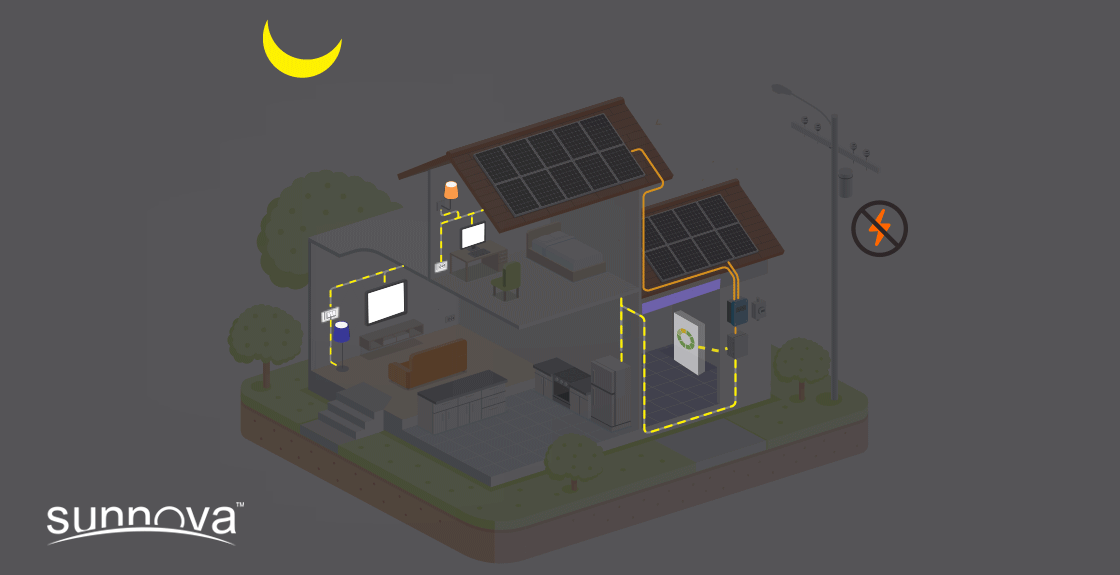

If you’ve decided to go solar, the next question you may ask yourself is, “do I also want battery storage?” When making this decision, you need to think about the additional benefits you get with a home solar + battery storage system compared to getting energy from your utility, or even from a solar-only system – it’s not necessarily an apples-to-apples comparison, more like apples to oranges.
Unlike a solar-only system or traditional utility energy, a battery enables you to power your most needed lights and appliances during a power outage , and will also protect your from rising peak utility rates. Those are two distinct advantages homeowners can appreciate!
Traditional Utility Energy
- Exposed to power outages
- Vulnerable to rising utility prices2
- Electricity provided by utility
- Pay peak utility rates
With Solar + Battery Storage
- ✓ Resilient backup power by continuing to produce solar energy during a power outage1
- ✓ Always know what you’ll pay for your solar + battery storage service
- ✓ Produce your own renewable solar energy for your home - right from your rooftop
- ✓ Protection from peak rates (when on a time-of-use utility rate plan)
- Sign Up
Power When You Need It Most
With solar + battery storage system, during a power outage, you will still generate solar energy during the day to power your most needed lights and appliances. Any excess energy goes to the battery and will be used when the system is not producing enough solar energy, such as at night.1 Even if the energy in the battery is depleted, it is rechargeable like your cell phone so once sunlight hits the panels again, excess energy from the solar system will recharge the battery while powering your home’s most needed lights and appliances.
A common question that comes up is, “How long will the battery power my home during an outage?” A home solar + battery storage system works similarly to any backup power solution and how long it will power your home depends on the amount of energy stored, as well as what it is powering.
The larger the power consumption, the less time your backup power supply will last. To get an idea of how long a battery will last, take a look at our tool:. https://www.sunnova.com/batteryduration/
Time-of-Use Rates
Across the U.S., utilities are beginning to introduce new residential rate structures which are designed to incentivize customers to consume energy when the cost of generating electricity is cheap and to discourage energy consumption when the cost of generating electricity is high. An example of this type of rate structure is called a time-of-use (TOU) plan where rates vary according to the time of day, season, and day type (weekday or weekend/holiday). At times when both the cost of generating electricity and demand for electricity are low (such as early in the morning or middle of the night), the kWh rate is lower. When both the cost of generation and demand for electricity are high (such as in the late afternoon/early evening when most people are home), the rate of electricity is much higher.
Example TOU Rate Structure
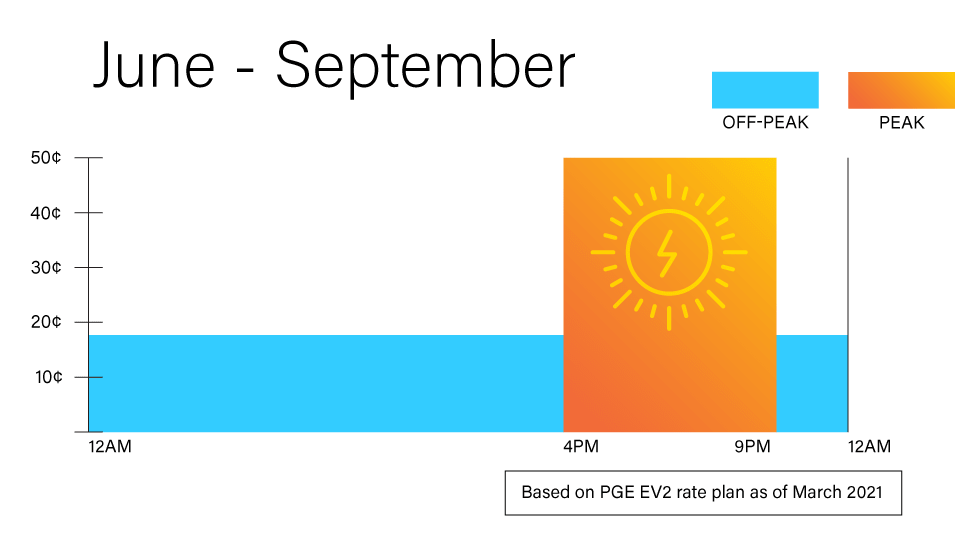
Protection from Peak Rates in California
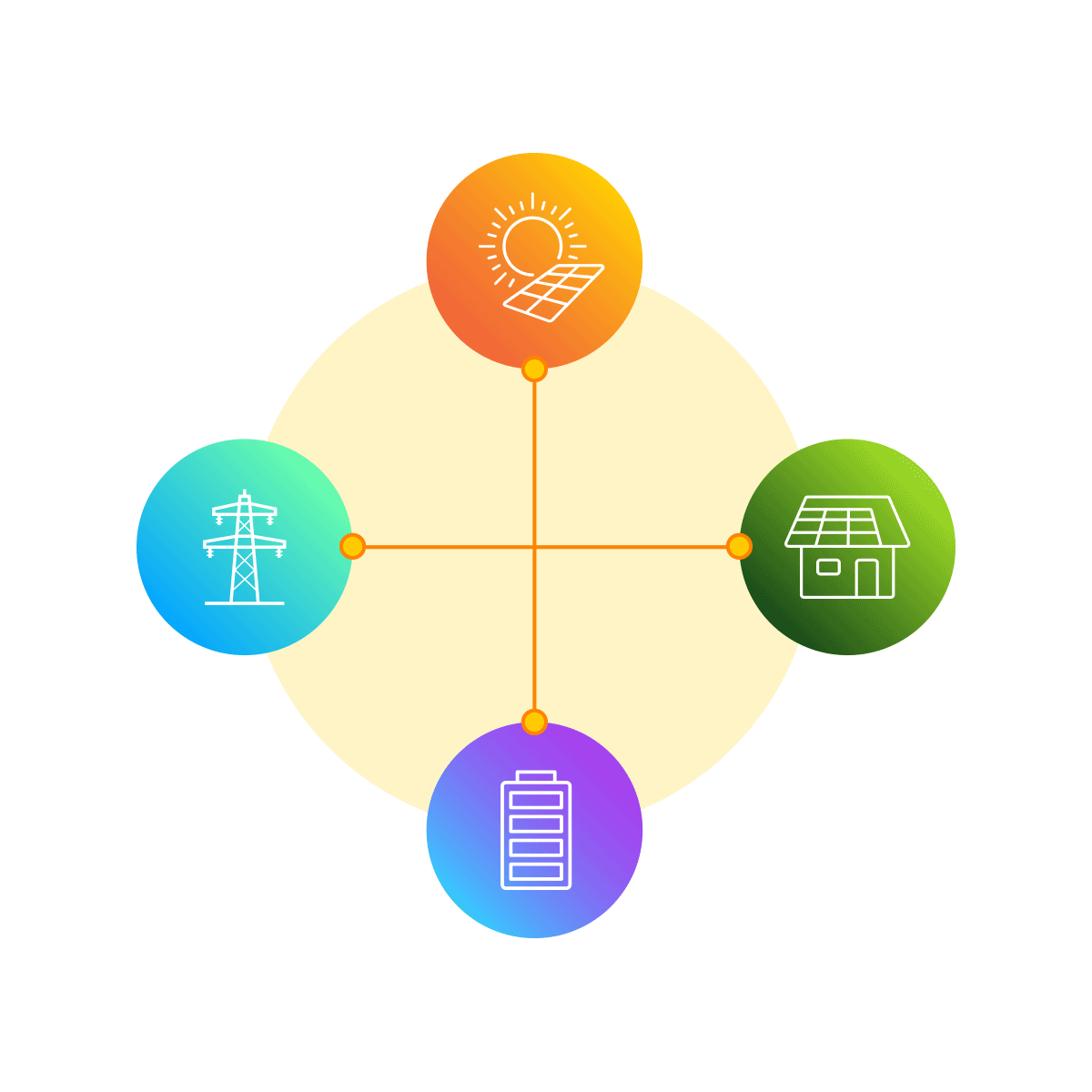
Thanks to its smart control system, a solar + battery storage system automatically manages the flow of energy to ensure you maximize your home solar benefits. If you are on a time-of-use (TOU) rate plan in California, when your utility rates peak:
- Your home will be powered by the solar energy produced by the panels and stored in your battery.
- Any excess solar energy your system produces will be sent to the grid to maximize your net metering credits.
California Utility Bill Reduction Example
If you are on a TOU rate plan in California, your utility bill could be reduced two ways when adding a solar + battery storage system to your home:
- 1. In general, your solar system will produce solar energy to power your home which will help offset your utility bill.
- 2. If you also have a battery, your home will be powered by stored solar energy in your battery when your utility rates are at their highest, which saves you from paying peak rates.
The actual reduction on your utility bill by using your battery during the TOU timeframe will depend on your utility rate, usage and battery capacity. However, to give you an idea of how much you could reduce your utility bill, we calculated the following examples, which assume:
- You have one 13.5 kWh battery.
- Your battery is charged to 100% and you consume 80% of its stored energy during the TOU timeframe.
| Utility | Rate Plan | Estimated Annual Utility Bill Reduction from Adding A Battery3 |
| SDGE4 | DR SES | Up to $410 |
| PGE5 | EV2 | Up to $795 |
| SCE6 | TOU-D-PRIME | Up to $860 |
You could also reduce your utility bill further by:
- Installing more than one battery
- Pushing any excess solar energy to the grid during the TOU timeframe
Learn more about TOU rate plans and how battery storage can optimize your solar benefits.
Battery Storage Costs
Here is the number one, first thing you should know about battery costs:
Just as the cost of solar panel installation has drastically diminished over the past few years, the price of the type of lithium-ion batteries used in solar installs has fallen by about 80% over the past five years!7 Learn more about the cost of going solar.When considering adding battery storage, you don’t only want to consider how much the battery itself will be, but also how it could save you from any potential out-of-pocket costs from an unplanned power outage. With a battery, you can keep your house comfortable, fridge on and your sump pump running.
Potential Costs of a Power Outage
8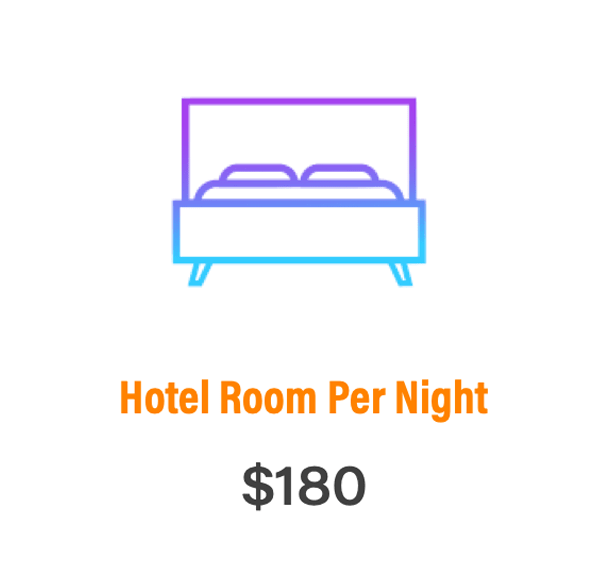
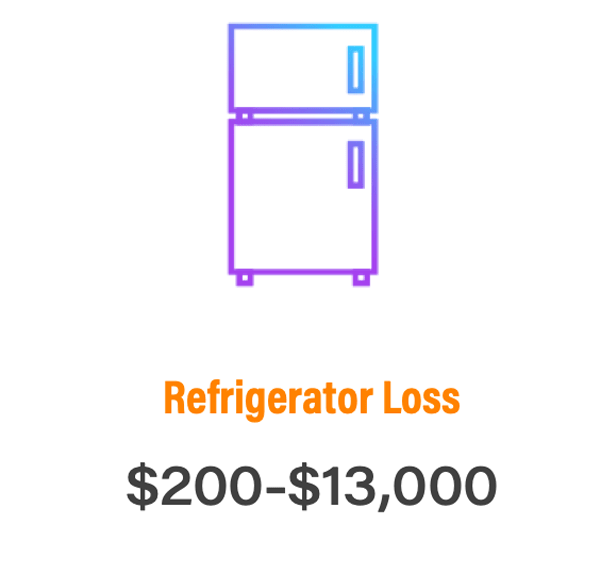
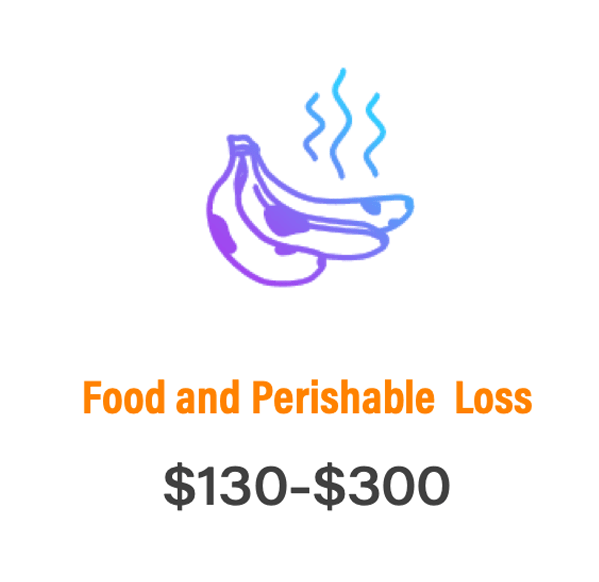
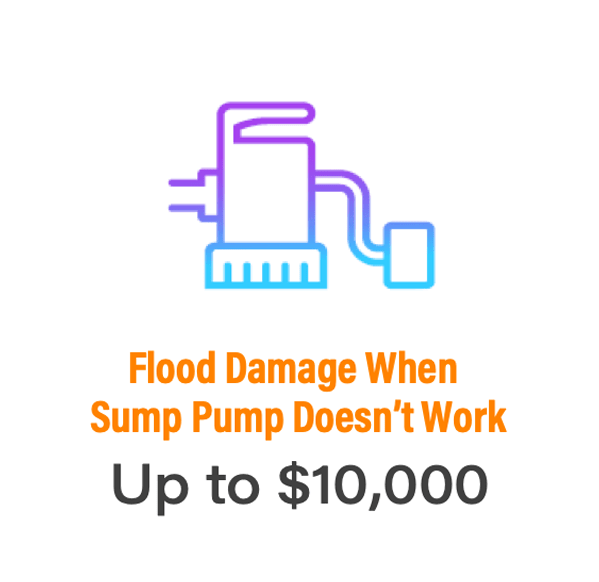
So, when deciding whether to add battery storage, you may want to ask yourself these questions:
- Does my area have frequent power outages? Does my utility have Public Safety Power Shutoffs (PSPS)? If so, solar + battery storage can make sure you have power when you need it most.
- Does my region experience extreme weather events, like wildfires, hurricanes or snowstorms? If so, solar + battery storage can help you power your essential appliances during a prolonged outage.
- If in California, does my utility offer TOU rate plans? If so, solar + battery storage optimizes your savings and maximizes net metering credits.
For more information on SunSafe®, Sunnova’s solar + battery storage service, please visit https://www.sunnova.com/home-solar-battery-storage.
- 1. The amount of power available from the battery during a power outage is limited, depending on the loads connected, customer usage and battery configuration (i.e. batteries in certain areas may be set up to provide you with the best economic benefit, which may affect the amount of back-up power available). Solar systems and/or batteries may require repairs after weather events and such repairs may be delayed due to forces outside of our control. No assurances can be given that the solar system or the battery will always work. You should never rely upon either of these to power life support or other medical devices.
- 2. EIA’s state-by-state CAGR Analysis shows an increase in residential electricity rates across all US States since 1990. To see the CAGR Analysis for your state go to EIA Sales and Revenue (1990- Current) - https://www.eia.gov/electricity/data/eia861m/.
- 3. The calculation assumes there are 21 weekdays and 9 weekend days per month. This estimate is based on year 1 battery performance. Approximately 10% of the battery’s energy is lost per cycle as it converts energy. Due to battery degradation, these numbers are expected to decrease over time.
- 4. Rates are as of March 2021. Summer peak rate is $0.61/kWh. Winter peak rate is $0.30/kWh. Source: http://regarchive.sdge.com/tm2/pdf/ELEC_ELEC-SCHEDS_DR-SES.pdf.
- 5. Rates are as of March 2021. Summer peak rate is $0.50/kWh. Winter peak rate is $0.37/kWh. Source: https://www.pge.com/tariffs/assets/pdf/
tariffbook/ELEC_SCHEDS_EV2%20(Sch).pdf
- 6. Rates are as of March 2021. Summer weekday peak rate is $0.44/kWh. Summer weekend peak rate is $0.33/kWh. Winter peak rate is $0.41/kWh. Source: https://www.sce.com/residential/rates/Time-Of-Use-Residential-Rate-Plans
- 7. Source https://www.nrel.gov/news/features/2020/declining-renewable-costs-drive-focus-on-energy-storage.html
- 8. Sources: Image 1 - https://www.statista.com/statistics/195704/average-hotel-room-rate-in-the-us-since-2005/; Image 2 - Average refrigerator prices vary depending on the type: https://www.homeadvisor.com/cost/kitchens/install-fridge/; Image 3 - Based on December 2019 US Average weekly cost for low and high food plans of a family of 4 with children either between the ranges of 2-3 and 4-5 years or 6-8 and 9-11 years: https://fns-prod.azureedge.net/sites/default/files/media/file/
CostofFoodDec2019.pdf; Image 4 - https://www.floodsmart.gov/why/why-buy-flood-insurance
